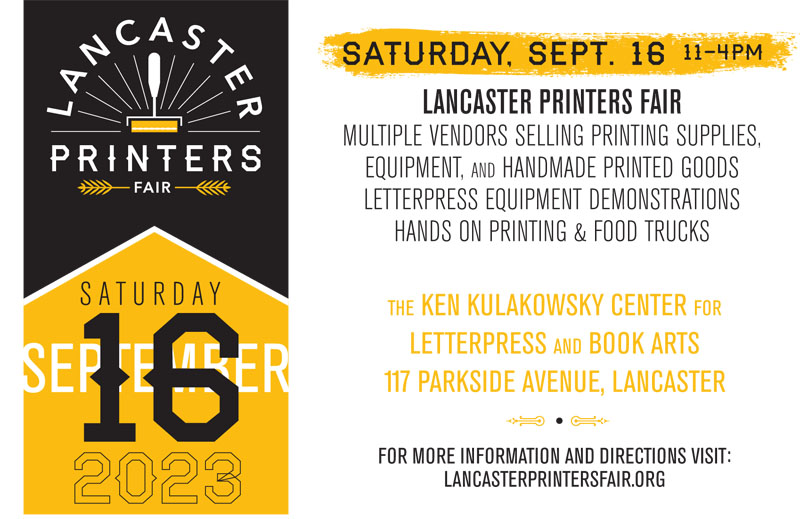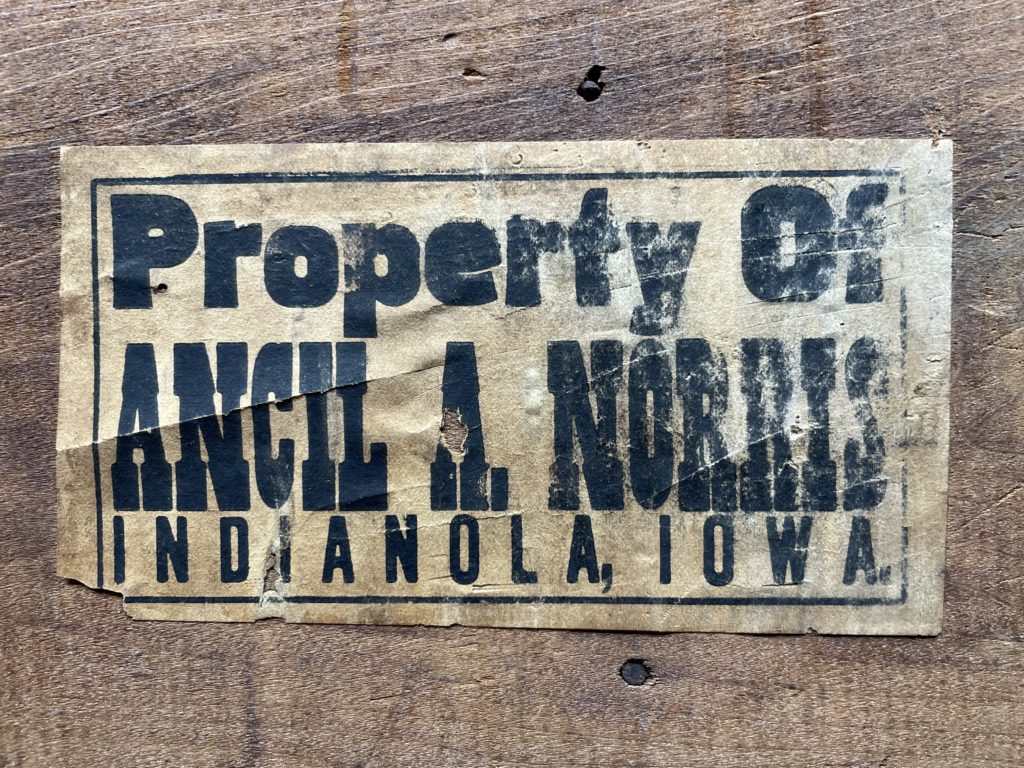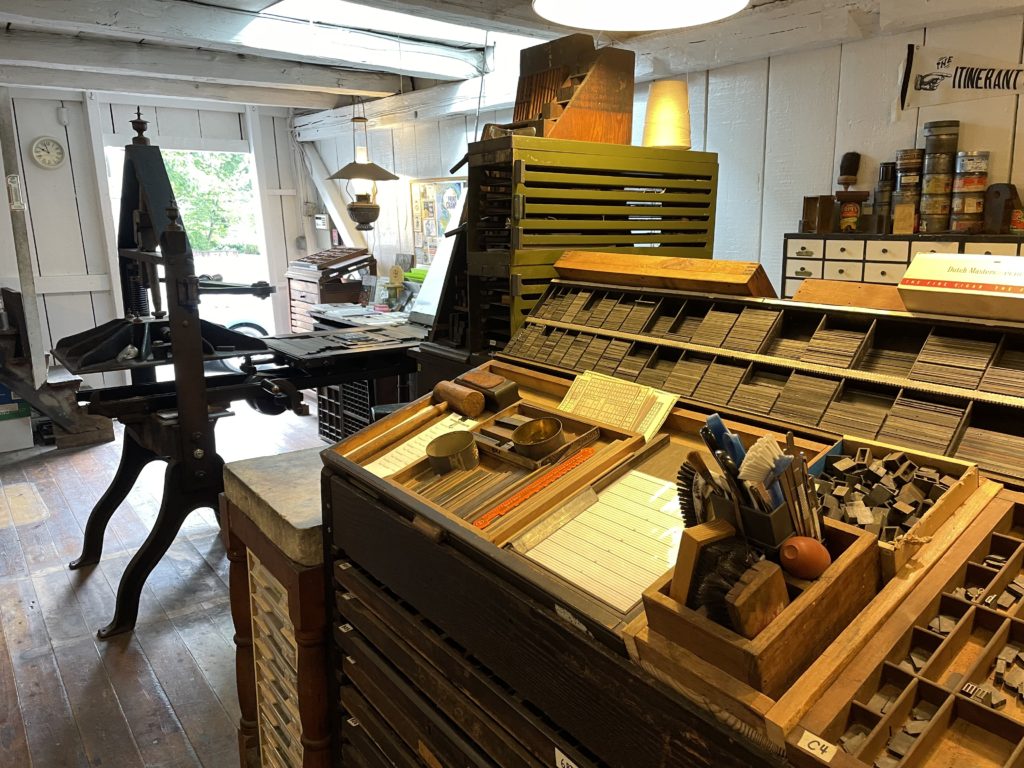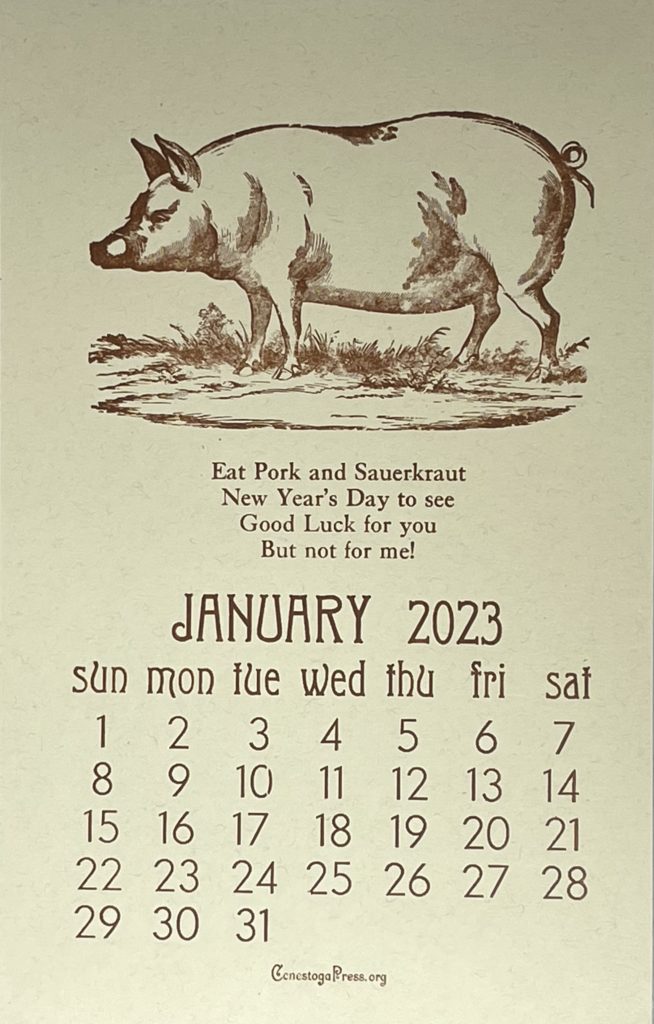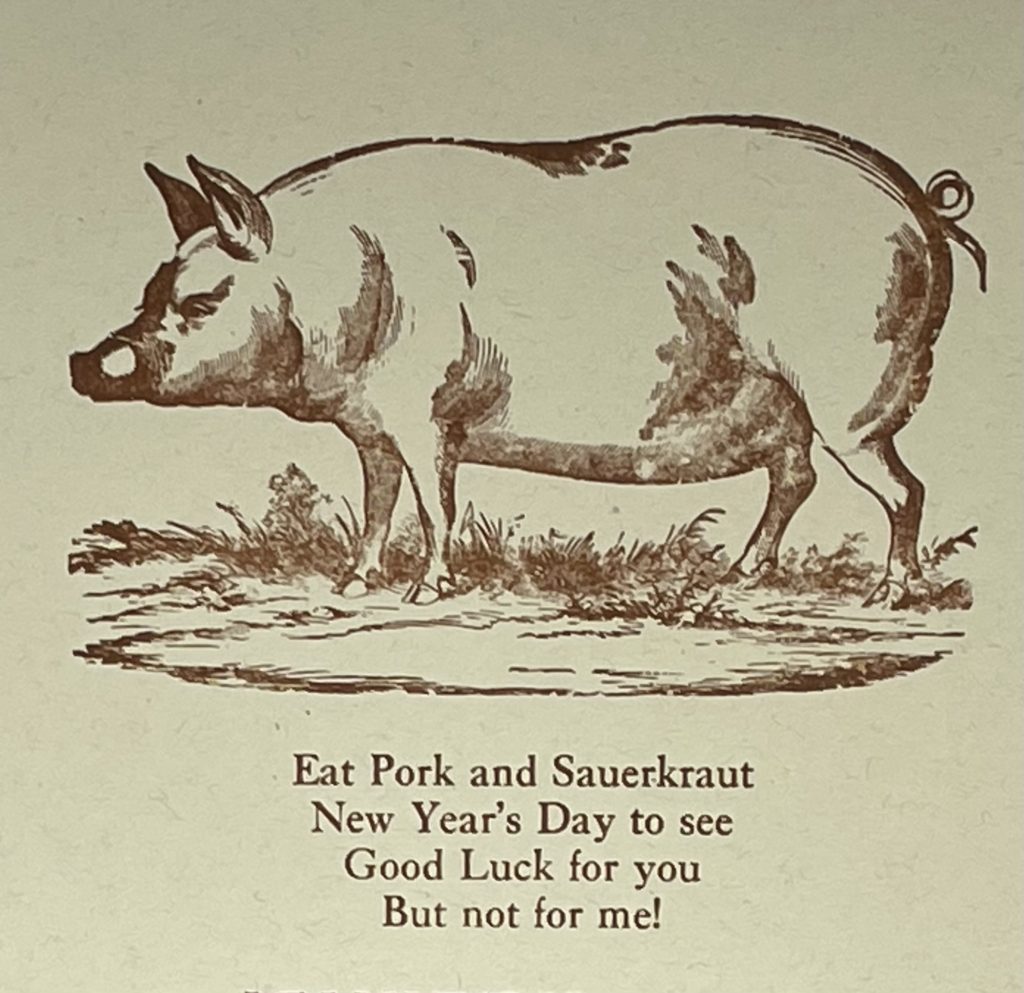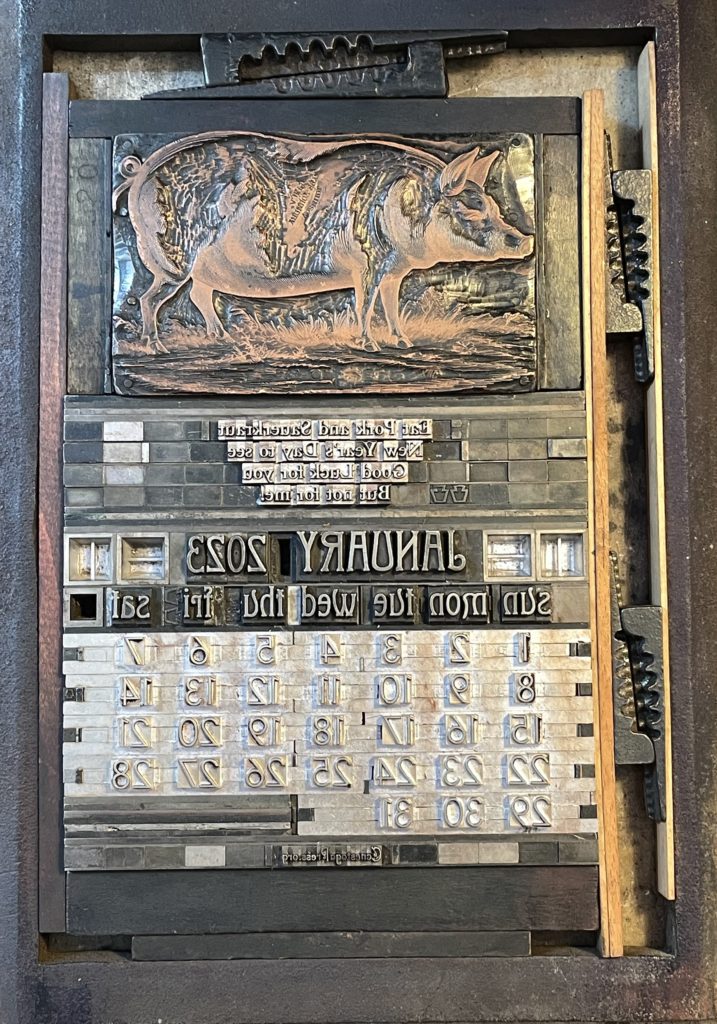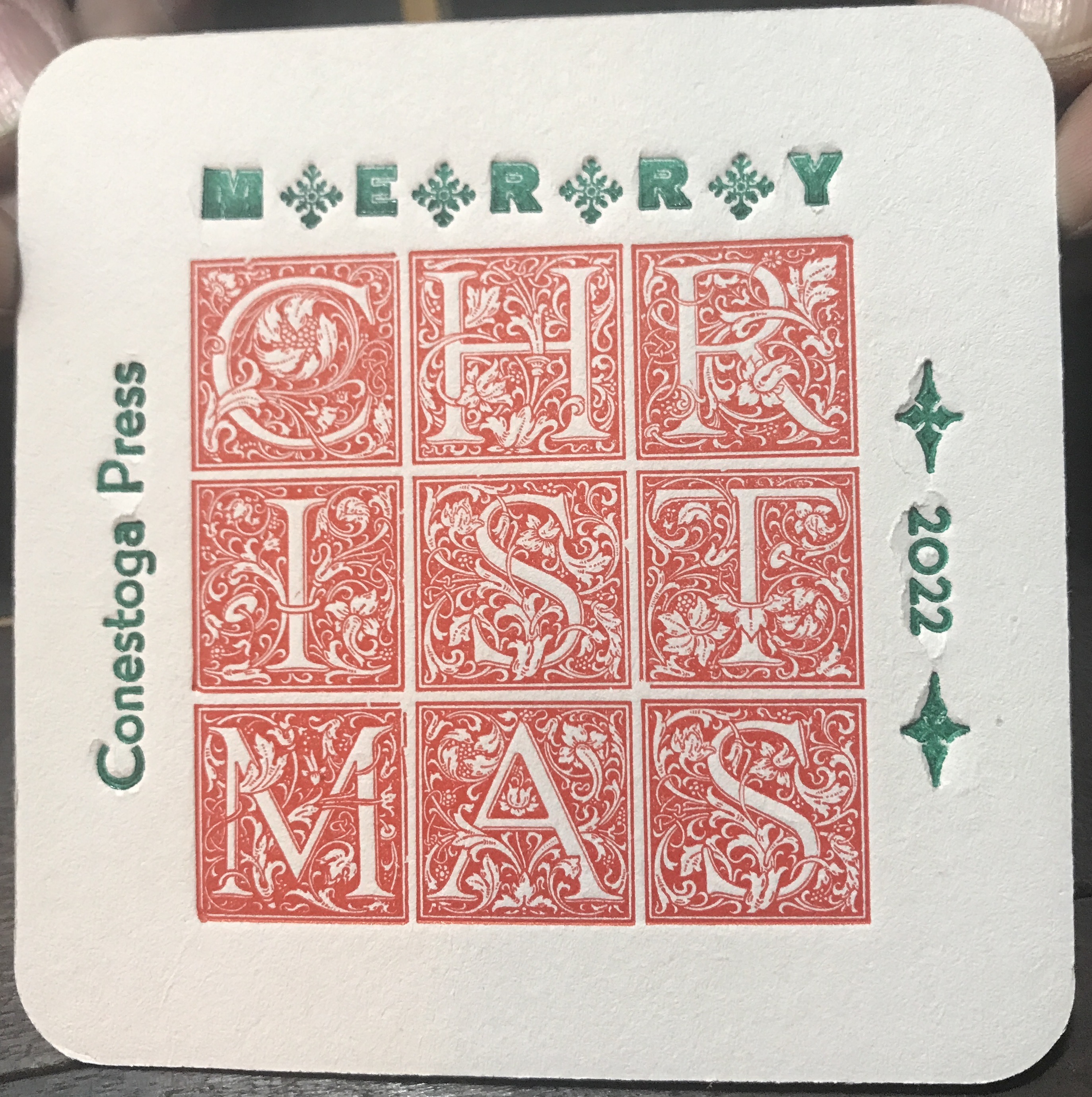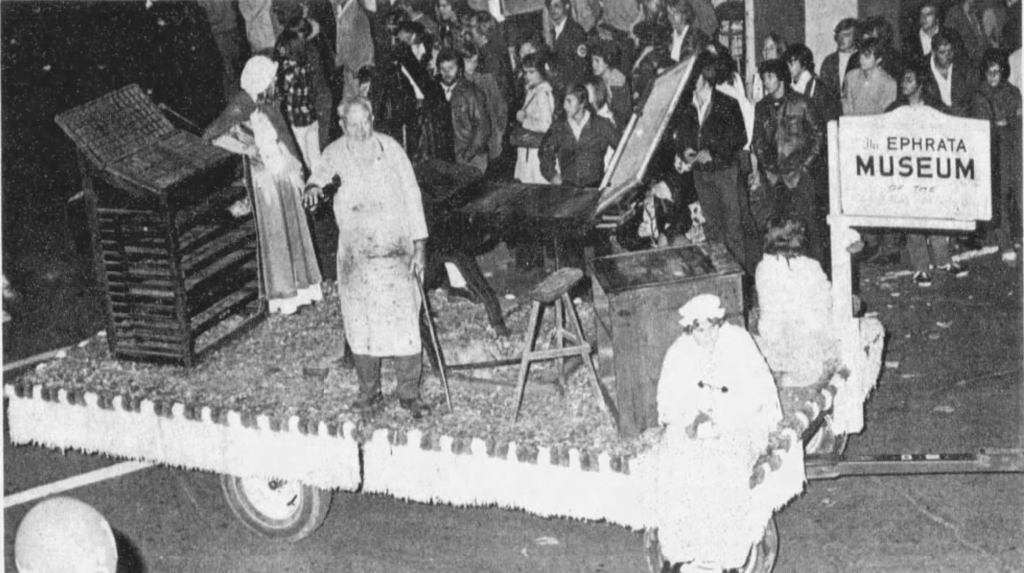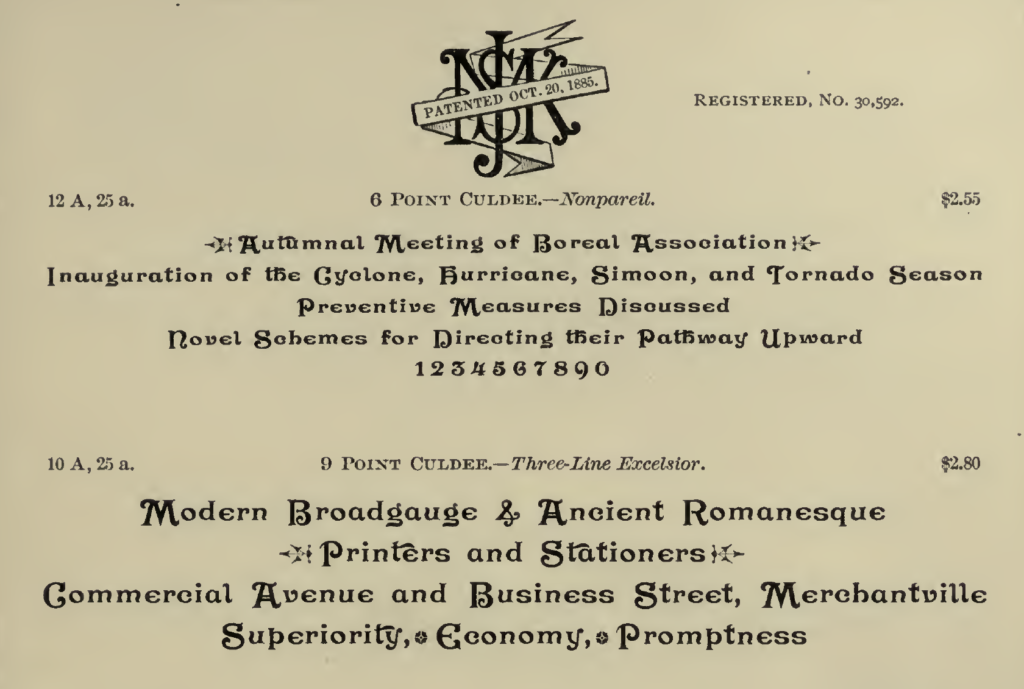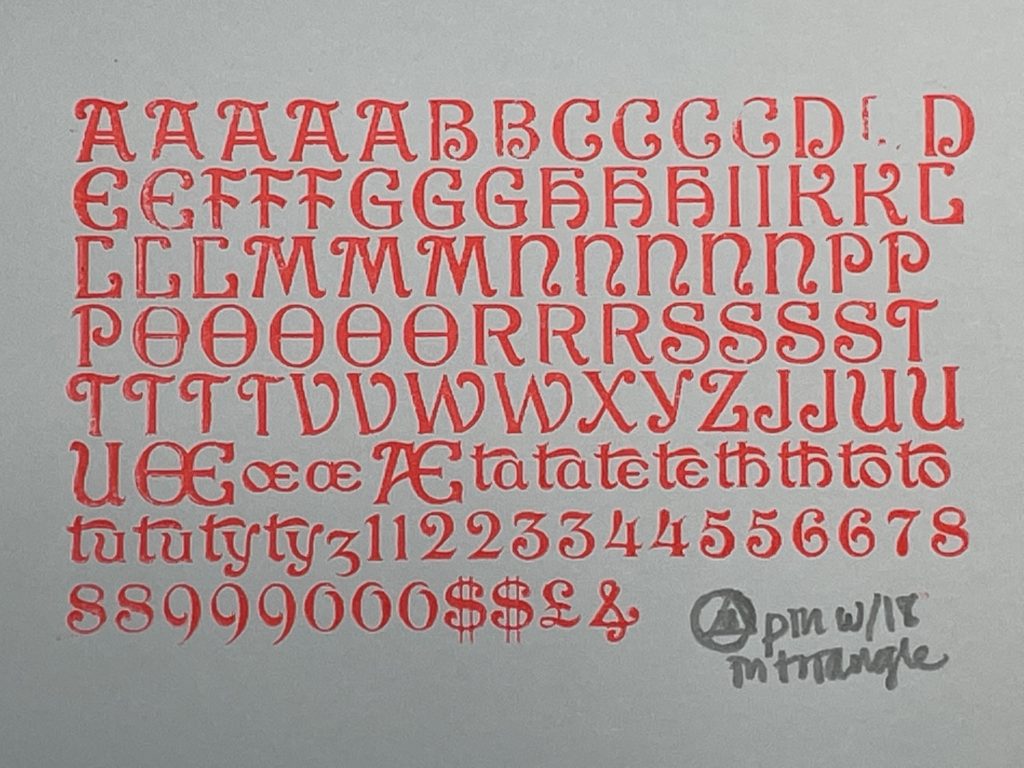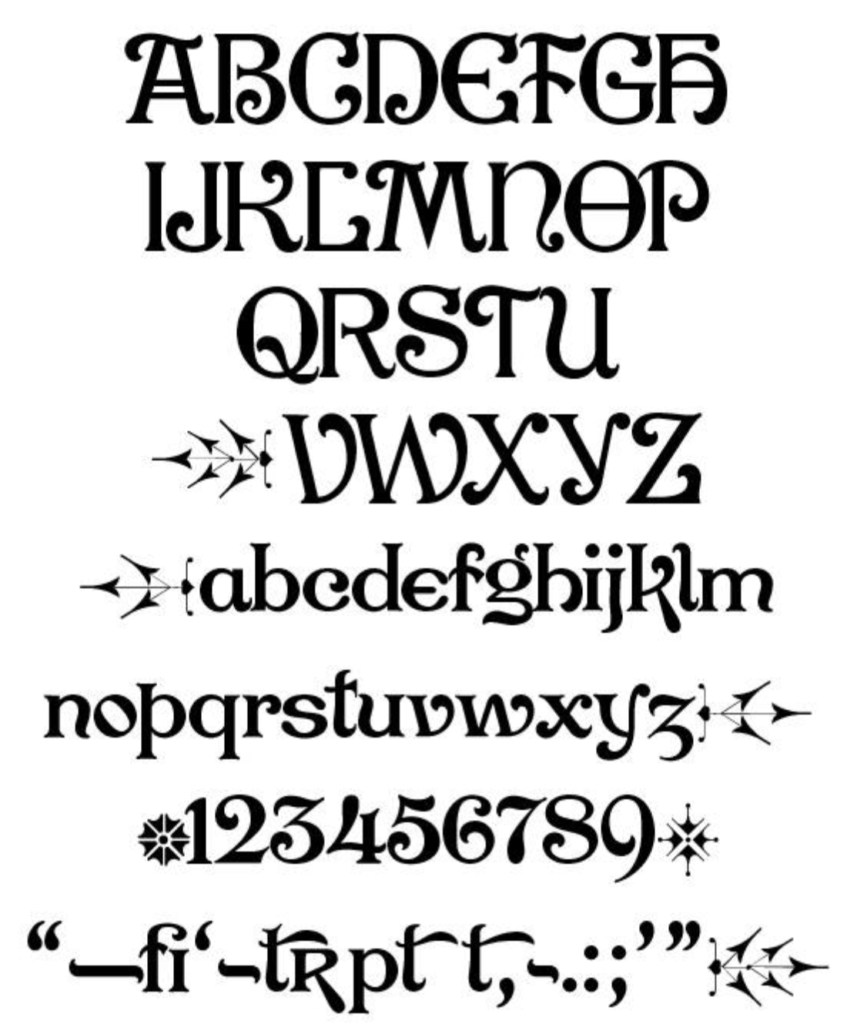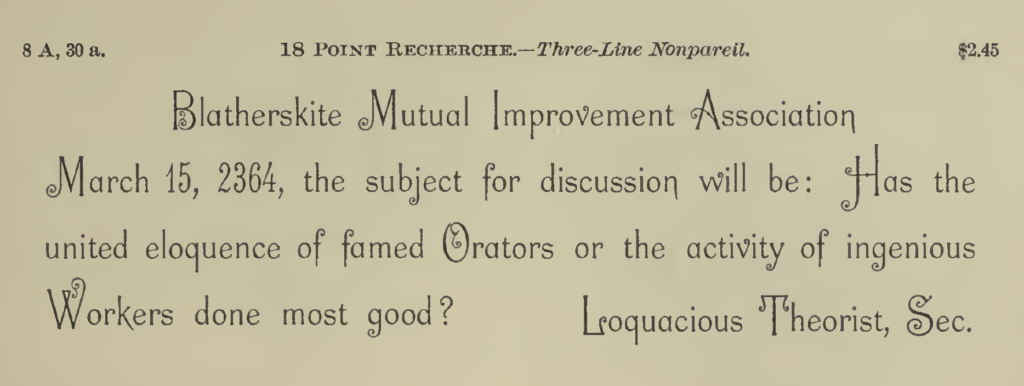This year for the first time we submitted a page for the APHA Chesapeake collaborative calendar. You can buy it here and support a great group… and get a calendar like no other! You can also view each month here.
The choice of the pig and the poem is based in a local Pennsylvania German tradition of eating pork and sauerkraut on New Year’s day for good luck. Printer Madelyn M. did some research on the tradition and found a few theories supporting it. There are logistical reasons why we eat sauerkraut this time of year. The Autumn is peak harvest time for cabbage when the cabbage would be chopped and put in barrels to begin the fermentation process. Usually by New Year’s Day, fresh produce is scant, so these fermentation barrels are tapped. Underlying health benefits of eating kraut may also contributes to this tradition, as historically, fermented foods were a big source of vitamin C and nutrients when fresh produce wasn’t available.
Legend also says that pork is enjoyed because pigs look forward when they root for food, rather than chicken and turkeys which scratch backward, just as the Germans were looking ahead to the New Year. They also wished each other as many riches as there are shreds of cabbage in the sauerkraut they eat. I’m a bit skeptical of these last interpretations having lived in the area all my life and not heard of them until more recent publications on Pennsylvania German food. I must say though, that even though I’m not a big fan I have my pork and sauerkraut every New Year’s Day (I can smell it cooking as I post this). There was one year I remember my family missing it when I was younger. The reason I remember that it wasn’t eaten that year is because everything bad that happened to anyone in the family that year was blamed on not having eaten pork and sauerkraut on new years.
Colophon:
We chose January to use a great cut of a pig from our collection. It is in copper from the Johnson Type Foundry, Phila. (1843 – 1860). The short poem I wrote is in 18 point Caslon (of some type or another). The month and days of the week are in 48 and 36 point Dynamo respectively, designed by Hermann Ihlenburg for MacKellar, Smiths, and Jordan in 1891. The dates were my first attempt at casting on the Ludlow at .918 Club in Lancaster with much assistance. The ConestogaPress.org at the bottom is in 18 point Recherche also of MacKellar, Smiths, and Jordan from the 1800’s.
